Have you ever wondered how video game graphics have changed over the years? From simple, blocky images to lifelike worlds, game graphics have come a long way. Understanding this evolution is important, not just for gamers, but also for those interested in game development and design.
This article will take you on a journey through the history of game graphics, from the early days of 8-bit visuals to the stunning 4K games of today. We will explore how these changes have shaped the gaming experience and what it means for the future of gaming.
1. The Early Days: 8-bit and 16-bit game Graphics
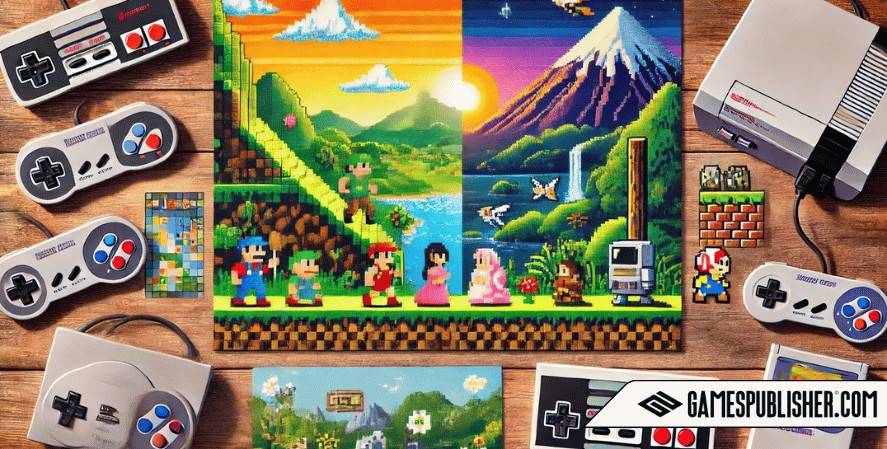
What Are 8-bit Graphics?
8-bit graphics were the start of something big in the world of video games. These graphics are known for their simple, blocky look and limited colors. Back in the 1980s, 8-bit graphics were a huge step forward.
Games like Pac-Man, Super Mario Bros., and The Legend of Zelda became famous for their 8-bit style. Even though the visuals were simple, these games were full of creativity and fun.
With only 256 colors to work with, game developers had to be clever in how they designed their games. They focused more on making the gameplay exciting and the stories interesting. This showed that even with basic tools, you could create something amazing.
16-bit game Graphics and the Next Step in Visuals
As technology improved, so did game graphics. The jump from 8-bit to 16-bit graphics brought more colors, better details, and smoother animations.
This era gave us classic games like Sonic the Hedgehog, Street Fighter II, and Final Fantasy IV. These games showed off what 16-bit graphics could do, with more vibrant colors and detailed characters.
With 16-bit graphics, game worlds became more complex and beautiful. Developers could create more detailed environments and characters, making games more immersive and engaging.
The 16-bit era was a crucial milestone in the progression of game graphics, setting the stage for future advancements in visual technology.
2. The Rise of 3D Game Graphics in the 1990s
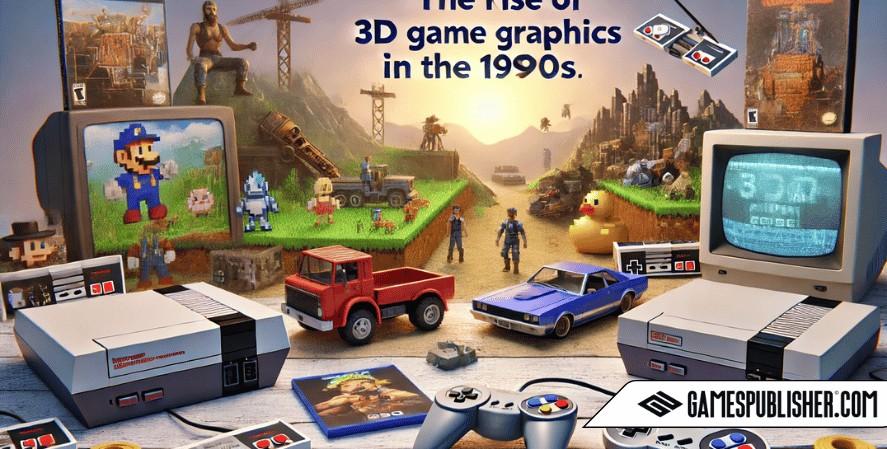
From Pixels to Polygons: The Birth of 3D Graphics
The 1990s brought a major change in game graphics with the introduction of 3D graphics. Instead of flat, 2D images, games started using polygons to create 3D models. This allowed for more realistic characters and environments.
Early 3D games like Star Fox, Super Mario 64, and Tomb Raider were groundbreaking, even if the graphics looked rough compared to today’s standards.
These early 3D games gave players a new sense of immersion. Instead of just moving left and right, players could now explore 3D worlds in all directions. This was a huge leap forward in game design, making games feel more like real worlds that you could explore and interact with.
The Role of Consoles in Promoting 3D game Graphics
Gaming consoles like the PlayStation and Nintendo 64 played a big role in making 3D graphics popular. These consoles had the power to run 3D games, helping to push the industry towards more complex and realistic graphics.
Games like Final Fantasy VII and The Legend of Zelda: Ocarina of Time showed what was possible with 3D graphics, setting new standards for what video games could look like.
The shift to 3D graphics also changed how games were designed. Developers had to think about how to create 3D environments that were fun to explore and easy to navigate. This was a big challenge, but it led to new and exciting ways to play games.
3. The HD Revolution: From 720p to 1080p
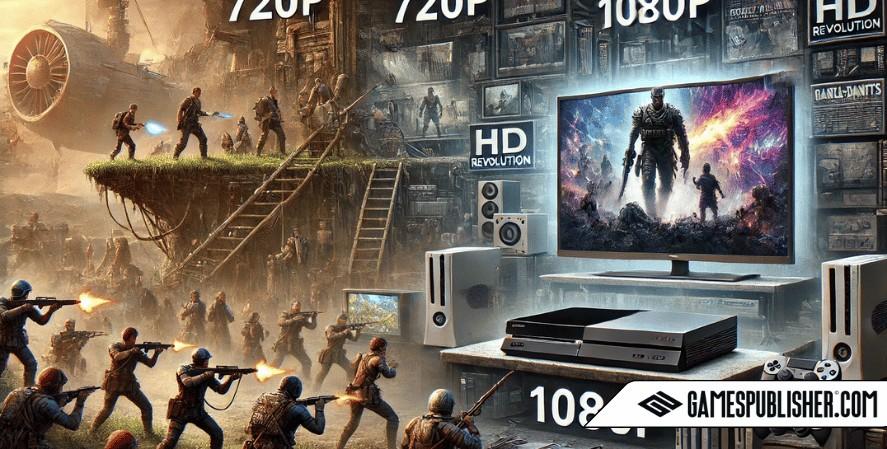
High-Definition Era: Introduction of HD Graphics
The next big step in game graphics came with the arrival of HD (High-Definition) graphics. This era began with 720p and 1080p resolutions, bringing sharper and clearer images to games.
Consoles like the Xbox 360 and PlayStation 3 were the first to introduce HD graphics, and games like Gears of War, Uncharted, and Call of Duty 4: Modern Warfare set new standards for visual quality.
HD graphics allowed for more detail in every part of the game, from characters to environments. This made games more immersive and visually stunning.
The increased resolution also made it easier to create cinematic experiences, with games looking more like movies than ever before.
Impact on Game Design and Player Experience
The move to HD graphics changed not just how games looked, but also how they were designed. With more detail available, developers could create richer environments and more complex characters.
This led to games that felt more alive and real. For players, this meant a more engaging and immersive gaming experience.
The higher resolution also allowed for more realistic textures and lighting effects, making games look more lifelike. This increased realism helped to draw players deeper into the game world, enhancing the overall gaming experience.
4. The Modern Era: 4K and Beyond
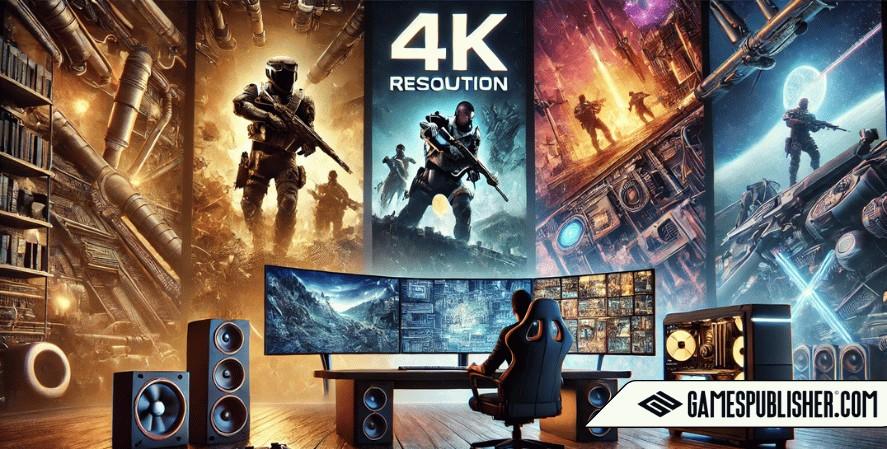
What is 4K Resolution in game graphics?
Today, 4K graphics are the new standard in high-quality gaming. 4K resolution means a screen resolution of 3840 x 2160 pixels, which is four times the detail of 1080p.
This ultra-high-definition (UHD) resolution brings an incredible level of detail to games, making them look more realistic than ever before.
Consoles like the PlayStation 5 and Xbox Series X, along with powerful NVIDIA graphics cards in gaming PCs, are capable of running games in 4K. This has pushed the boundaries of what is possible in game graphics, with games like Red Dead Redemption 2, Cyberpunk 2077, and The Last of Us Part II leading the way in visual excellence.
The Demand for Realism in Games
As 4K graphics have become more common, there has been a growing demand for realism in games. Technologies like ray tracing and photorealistic textures have helped to create games that look almost like real life.
This level of realism has made games more immersive, allowing players to lose themselves in the game world.
However, creating such detailed and realistic graphics comes with challenges. Running these games efficiently requires strong hardware, but not every player has access to the newest technology.
Therefore, making sure games perform well across different platforms is more crucial than ever.
Challenges and Future of 4K Gaming
While 4K gaming offers stunning visuals, it also presents some challenges. Many players lack 4K TVs or monitors, and playing games at this resolution demands significant processing power. This can make it difficult for developers to ensure that their games run well on all systems.
Looking to the future, 8K gaming is already on the horizon, promising even more detail and realism. There is also a growing interest in virtual reality (VR) and augmented reality (AR), which could take game graphics to new heights. As technology continues to advance, the possibilities for game graphics are endless.
5. The Role of Art Styles Across Generations
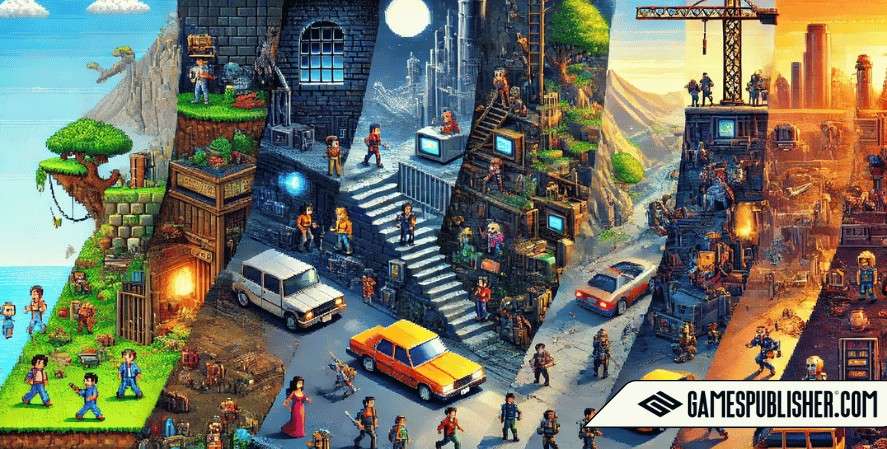
Pixel Art to Photorealism: Diverse Art Styles in Gaming
Even as graphics technology has advanced, different art styles have remained popular in gaming. Pixel art, for instance, remains popular in indie titles such as Celeste and Undertale. These games show that even with simple graphics, you can create something beautiful and meaningful.
Other art styles, like cel-shading, hand-drawn, low-poly, and photorealism, have also found their place in different genres. Each style brings something unique to the game, helping to tell the story in a way that suits the game’s tone and theme.
Balancing Style with Technical Constraints
Throughout the history of game graphics, developers have had to balance their artistic vision with the technical limitations of their time. Whether working with 8-bit graphics or pushing the limits of 4K, developers have always found creative ways to bring their ideas to life.
This balance between art and technology is a key part of game development. As new tools and techniques become available, developers will continue to find new ways to create visually stunning and engaging games.
Conclusion
The Ever-Evolving Landscape of Game Graphics
From the simple 8-bit graphics of the 1980s to the breathtaking 4K visuals of today, game graphics have come a long way. Each new era has brought its own challenges and opportunities, shaping the way games are designed and played. For game developers, understanding this evolution is crucial to creating the next generation of games.
As technology continues to advance, the future of game graphics looks bright. Whether it’s 8K resolutions, virtual reality, or something we haven’t even imagined yet, one thing is certain: game graphics will keep evolving, offering new and exciting ways to experience the world of gaming.
Loading survey...

